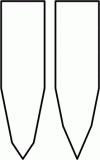adam_balisonger
BOUNCED EMAIL: I need to update my email address in my profile!
- Joined
- Aug 16, 2007
- Messages
- 16
Hi people, im new to the forum and new to knives. I just got my brand new BM 42 and a SOG flash I, but I am unsure how to sharpen them. I know i want a but of a smaller angle on the BM to have it really sharp, but i have no clue as to how to acheive this. I have heard much about the Spyderco sharpmaker, but I know i defenitely want to learn how to use a stone eventually. Should I get the widely used spyderco sharpmaker? Or should i use a DMT diamond stone, or a water stone, or some other sharpening device? Somebody please help me!!


